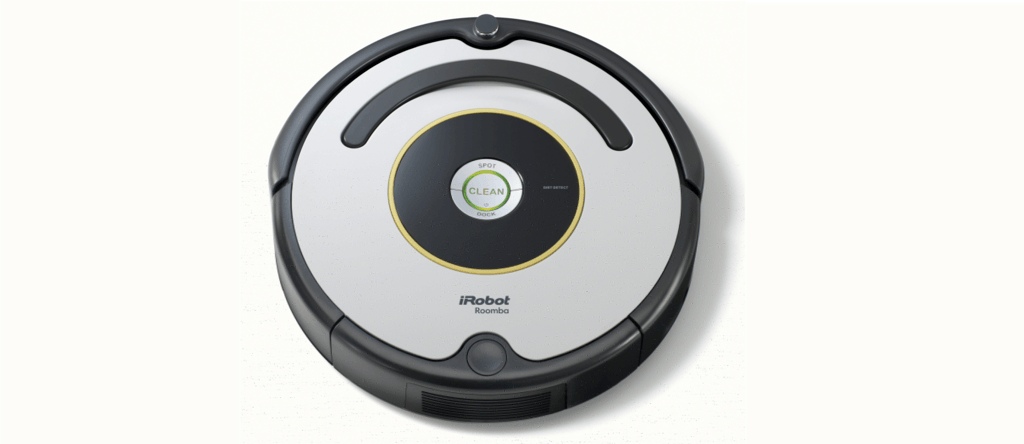Roomba has created the 600 series with budget-friendly intentions in mind. The majority of the 600 series is aimed at the consumer that is on a tight budget, is new to the home automation cleaning market, or those that want a second (or third) robot for their home.
The Roomba 620 is one of the least expensive Roomba vacuums you can find, and it still does a great job at cleaning. While there are a lot of features that have been removed to save money, the 620 still has enough under the hood to keep your floors maintained.
Contents
Who Is the Roomba 620 For?
The robot is designed to be functional and save money. However, there are certain groups that will benefit the most from the 620 (aside from those that want to save money). These groups include:
- Homes with pets that shed or have small children that make messes.
- Non-technical persons that don’t have time to learn mobile apps or remote controls.
- Small homeowners or single persons looking for help cleaning their floors.
Who is the Roomba 620 Not For?
Not everyone will like (or benefit) from the economical models. You may find yourself wanting more, and needing to spend more if you:
- Need daily or constant scheduling of the robot.
- Have a large floor space with carpet that is high pile or shag.
- Need a robot that cleans in a predictable path or has wireless communications.
Dimensions, Features and Options
When you are deciding on a robotic cleaner for your home, it is a good idea to know what is inside and how things really work. In this section, I will break down the important features of the Roomba 620, so you don’t have to rip yours apart when you get it home.
The Filters Are Small But Mighty.
Filtration is always going to be a sticking point for vacuum sales. Filtering the air being pushed back into your room means a lot to the overall health of your family. Especially if you suffer allergies from in-home pollutants such as pet dander, pollen or even dust mites.
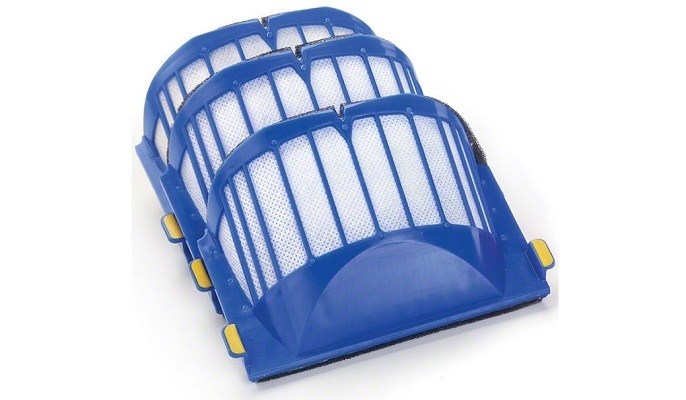
Some filters are better than others, some have certifications and still, others have fancy names that make them sound more substantial than they really are.
In that vein, iRobot uses what they call the AeroVac Standard Filtration. Roomba also uses high-efficiency filters, but they aren’t found on the 620. The standard filter is a decent filter and it has two basic jobs: to protect the motor from contaminants and to capture particles returning to the air and floor behind the machine.
It does both really well. Unlike some upright models, there isn’t a pre-motor and post-motor filter. You get one filter that fits inside the machine, accessed through removing the dustbin. The filter protects the motor really well, keeping the entire area free of dust and debris.
The filter is small, though, which means it fills up quickly. The Roomba owners manual will recommend you change the filter every three months. However, you should check it after every two or three cleaning cycles. Most users report the filter needs to be changed every six to eight weeks.
The good news (if you are an optimist) is that you will be able to tell when the filter needs to be changed due to being clogged because the robot will be very sluggish, running through the battery charge faster and not cleaning as efficient.
If you remove the filter after every second or third cycle, you can knock it against the inside of your garbage can to clean out most of the collected debris. Doing so will improve the robot’s performance and prolong the life of the filter.
When it does come time to change the filter, it’s as easy as removing the old one and putting a new one in its place. You don’t need to prime the filters with water or sprays like some charcoal filters will need. You will not receive extra filters in the box with the 620. Though, you can purchase them from reputable third-party vendors online or from the iRobot website itself.
Extra filters will generally come in a pack of three, which should last you about a year.
The second job of the filter is to prevent dirt, dust and debris from returning to your floors after being collected. What this filter will not do is collect allergens. Most in-home allergens range in the size of three to five microns.
To collect allergens, you will need an anti-allergen filter. Most notably these are certified filters that come with the HEPA label. In recent years a lot of companies have stopped having their filters certified and have renamed their HEPA filters as “high-efficiency.” Side note: If you see a high-efficiency label, it is the same as being HEPA certified, just without the third party certification.
As it is the AeroVac standard filter is not HEPA certified and is not high-efficiency. It will collect particles down to about 10 microns in size, but those pesky allergy-inducing things like pollen and dust mites and pet dander will make it through the filter if they try hard enough.
Because the Roomba 620 isn’t designed to replace your upright vacuum, you can still get HEPA filtration through your upright and not worry so much about the Roomba filter. However, if you need the extra protection, the 620 may not be the right choice for you.
The Battery Is Larger And More Productive.
Other robots in the 600 series use smaller celled batteries and have lower runtimes. The 650 and 652, for example, both have a runtime of about an hour and use a 2200mAh and 2600mAh battery, respectively.
The Roomba 620, on the other hand, has a runtime of up to 90 minutes. The battery installed in the 620 is often misidentified as a high-output 3500mAh battery. This confusion comes in because that is what the replacement battery you can purchase from the iRobot website is.
Inside the 620, when you take it out of the box, though, is a 3300mAh battery. Not much different, but it does need to be noted. Along with the above average battery size and extra half hour of runtime, you also get the robotic benefits of having a larger battery.
Because the 620 is stripped of most of the high draining features like wireless communications, the battery and the power it supplies can concentrate more on sensors, navigation, motor control and collection bin leveling.
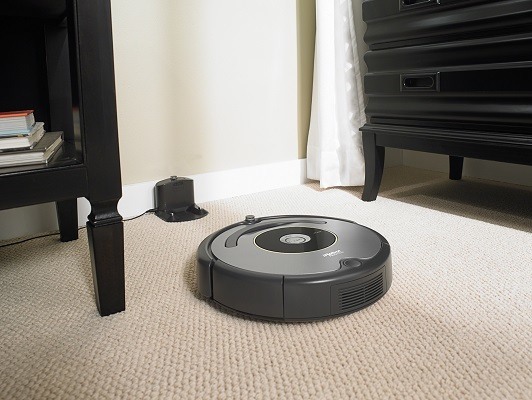
When the battery does run low, the robot will stop its cleaning cycle and return to the charging dock. As long as your floor space isn’t too massive, the robot shouldn’t have a very difficult time cleaning the entire space in one charge.
In the event you have a lot of carpets, heavily soiled areas or well over 1500 square feet, you may find that the job takes a couple of cycles to complete. Not every battery can last forever, and after about 80 minutes of running around, the little guy will need to recharge the batteries.
What the robot will not do, however, is resume cleaning after the battery is charged. It will sit there, waiting for you to press the start button again.
If you find that the robot doesn’t complete a cycle in a single charge, it will complete it after a second one. Even if it goes over the same areas it just cleaned before docking, the entire level will get cleaned in a couple of cycles.
The Controls Are Very Limited, Which Could Make Or Break Your Decision.
With the Roomba 620, you won’t have a lot of extras. One of those extras that are missing comes in the form of controls.
You will have local controls and that is all. There isn’t a wireless receiver in the Roomba to allow the use of voice commands or the mobile app. There isn’t a remote control shipped with the unit either.
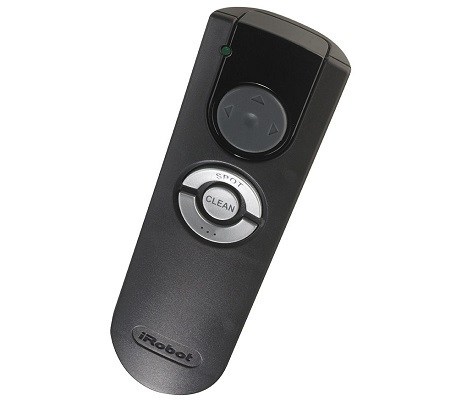
There is a remote control that offers manual steering, start, stop, pause and resume for cleaning cycles and some scheduling abilities. You can purchase this remote from the iRobot website, but I wouldn’t recommend it.
The remote control doesn’t work with all of the robots and even those listed as compatible seem to have more issues than it is worth. The 620 is designed to be near-featureless to keep costs down and performance high.
The local controls are straightforward and quite simple. In the middle of the faceplate on top of the unit is a large button marked “Clean.” Pressing this button will wake the robot and pressing it again will send the robot on its way to clean your floors.
You can press it a third time to stop the cleaning cycle if you wish. On the top of the Clean button is a semi-circle button marked “Spot.” Pressing this button at any time will make the robot switch to spot cleaning mode. During this short cycle, the 620 will spiral around a central spot (where the button was pressed) doing a thorough and deep cleaning of that area.
This comes in handy when there is a heavily soiled area or a quick spill that needs to be cleaned up.
Below the Clean button is the third and final control option. This one is marked “Dock.” The dock button will send the robot back to the charging dock to recharge its battery. You should note though, that before pressing this button, you will need to stop the active cleaning cycle.
To do so, you will first need to press the clean button. This will stop the cleaning cycle and set the robot in its waiting state. What it is waiting for is its next command. Pressing the dock button will then tell the robot to go home and rest.
The faceplate has one final notification, though it isn’t a button or a form of control. It is the “dirt detection” indicator. This lights up when the dirt detection sensor notices the current area being cleaned is still dirty.
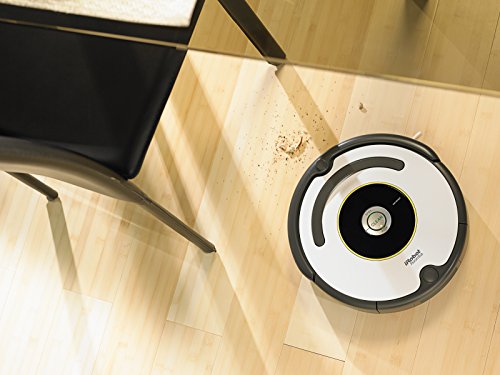
This is more for your benefit than for the robot. The robot will spin around and return to the same spot over and over as long as it detects dirt still present. If you are watching the robot, you may think it is broken. This indicator alerts you that the robot is fine and is, in fact, cleaning as it should be.
One of the best things about Roomba vacuums is the ability to use all of its sensors to navigate around your home. Some models will run into things more often than others, but they will all do it.
The 620 is no different. What sets Roomba apart, though is that the robot, while seemingly random, is actually doing what it is supposed to do, and preventing damage to your items or itself in the process.
The drop sensors prevent the robot from falling off stairs or getting caught, high-centered, on ledges. If the drop sensors detect a distance greater than about half an inch, the robot will stop and change direction. Of all the sensors on all the robots, this is the one sensor I have yet to see a report of failure.
To my knowledge, no Roomba has ever run off the stairs without help. The bump sensors use a mixture of acoustics and infrared to find walls, furniture and other obstacles in its path. The robot will slow down when approaching and test the object with the bump sensors. If it moves, the robot continues, if it doesn’t, the robot changes course.
The final sensors are the dirt detection sensors, which I mentioned earlier. When activated the robot works extra hard in that area to ensure all the dirt, dust and debris are removed.
All the sensors work together to help the robot stay on the ground, clean the floors and not cause any damage. You will notice that the robot just runs around, seemingly going wherever it wants without rhyme or reason.
The iAdapt navigation system (another fancy name for the sensors and algorithms used for navigational purposes), though, is still one of the best and you can be assured that your entire floor is getting clean, even if it looks otherwise.
Specifications Chart
Let’s take a look at what the Roomba 620 does and doesn’t offer. Knowing if your desired feature is available could be crucial to your final decision.
| Roomba 620 | |
| Dimensions | 13.4×13.4×3.6 inches |
| Weight | 7.94 pounds |
| Battery | 3300mAh Lithium-ion |
| Automatic Recharge | Yes |
| Automatic Resume | No |
| Runtime | Up to 90 minutes |
| Recharge Time | 3 hours |
| Filter | AeroForce Standard |
| Collection Bin Capacity | 0.5L |
| Wireless Communications | No |
| Bluetooth | No |
| Remote Control | No |
| Mobile App | No |
| Voice Commands | No |
| Local Controls | Yes |
| Navigation | iAdapt Navigation Technology |
| Mapping | None |
| Drop Sensors | Yes |
| Bump Sensors | Yes |
| Dirt Detection Sensors | Yes |
| Containment | Virtual Wall Barrier (separate purchase) |
| Scheduling | No |
| Full Bin Indicator | No |
| Side Brushes | 1 |
| Floor Types | All |
| Warranty | 1 year |
Alternative Options
If you are looking for a robot and aren’t sold on the Roomba 620, here is another to think about, or compare to the 620.
Roomba 860
The Roomba 860 is one of the best Roombas made. It offers mobile connectivity, as well as voice controls, high-efficiency filters for those that suffer allergies and more features than the 620. If you are looking to save money by avoiding the 900 series robots, but want more control and features than the 620 can offer, the 860 may be perfect for you.
You will pay considerably more for the 860 over the 620, but you will know where your money went if you do.
Frequently Asked Questions
A couple of questions keep cropping up again and again, allow me now to answer them for you.
Q. Can you schedule the 620 to clean while you are away?
A. No. The 620 doesn’t have a scheduling option. It is manual start all the way through the use of the local controls. However, if you don’t want to be home while the vacuum does it’s thing, press the clean button as you head out the door.
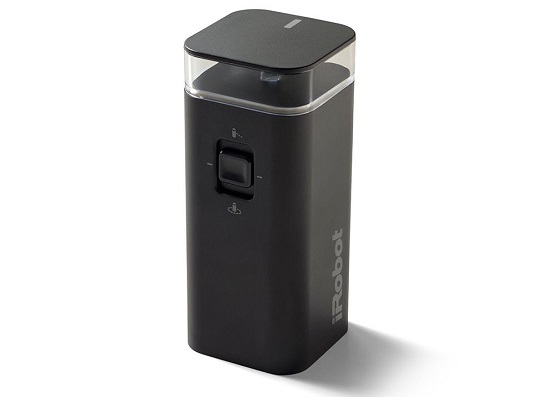
Q. Does it come with any form of containment?
A. It does not, unfortunately. You will need to use physical barriers, like closing doors, or put heavy objects in the way to prevent access to rooms or areas of rooms. The robot is compatible with the dual mode virtual wall barrier, though. You will need to purchase them separately if you want to use them.
In Conclusion
The Roomba 620 is one of the lowest cost robotic vacuums on the Roomba line-up. You won’t get anything fancy with it. You won’t be able to create a schedule, use the mobile app or voice commands.
What you do get is a Roomba that can tackle any floor type and clean efficiently and thoroughly. If you are looking for a well built, reliable, name brand robotic vacuum and are on a tighter budget (or testing the robotic cleaner market), the Roomba 620 is a great place to start.
In a Nutshell
The Roomba 620 gives you everything you must have to maintain clean floors. You won’t spend a lot of money, which is nice, but you will miss out on some of the more popular features. If you just want a robot that will clean the floors and not give you any trouble, the 620 is one to consider.
What I Like
- Simple, no fuss approach to floor cleaning.
- Efficient and easy to maintain.
- Dust bin is large, allowing for less frequent emptying.
What I Don’t Like
- Filtration could be improved to include allergen collection.
- Scheduling would be a huge bonus.
- Lack of controls can be frustrating for those looking for more technological uses.
